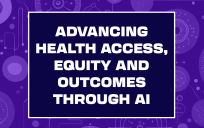The Trump Administration has gotten off to a busy start, by issuing a number of new executive orders and championing certain legislative proposals. It can be hard to keep track of all the new policies and requirements, but if you’re in state and local government, there are a few policies and conversations in particular that you should be paying attention to.
Sanctuary Cities
The most controversial topic facing state and local governments in the new administration concerns policies around sanctuary cities. A sanctuary city or state is one where state or local governments protect undocumented immigrants by refusing to enforce federal immigration laws. Typically, local law enforcement will arrest an undocumented immigrant for some type of criminal offense, and when his or her information is sent to federal officials, Immigration and Customs Enforcement (ICE) agents can request that the arresting jurisdiction hold the immigrant until the federal officers obtain an arrest warrant under federal administrative law. In sanctuary cities though, local officials release the undocumented immigrant once the criminal case has been completed, regardless of the status of a federal investigation. In some states and cities this policy is codified in law, while other jurisdictions handle requests on a case-by-case basis.
On January 25th, President Trump signed an executive order that targeted sanctuary cities in an effort to pressure local governments to comply with and enforce federal immigration laws. The executive order empowers the Secretary of Homeland Security and the Attorney General by allowing them to designate sanctuary jurisdictions, issue reports on crimes committed by undocumented immigrants, and withhold federal funding from sanctuary jurisdictions. There is likely to be further legal debate surrounding the third provision in the coming weeks and months. Since the executive order was issued, some cities such as Miami have acquiesced to the President’s requests while others such as New York City have maintained their sanctuary status.
The Affordable Care Act
Questions over how, when, and which parts of the Affordable Care Act will be repealed or revised largely remains a mystery right now, but these questions will likely have a significant impact on state governments. President Trump’s first executive order prioritized the repeal of the Affordable Care Act, and it specifically gave the Department of Health and Human Services (HHS) and other agencies the flexibility to work with state governments to ease the financial and regulatory burdens of the bill. Since this order was signed though, congressional Republicans and the administration have been debating the next steps.
Proposals from Speaker Ryan, Senator Rand Paul, and former Rep. Tom Price, now Secretary of HHS, may shed some light on what impact a replacement bill could have on states. The proposals would give insurers the flexibility to sell insurance plans across state lines, and as a candidate, Trump seemed to show support for this policy change. These plans also give states governments more flexibility to determine private insurance standards and market rules, and some would encourage states to establish high-risk pools for patients that require more significant care. Speaker Ryan’s proposal also includes “State Innovation Grants” to encourage states to develop more effective reform measures.
Last week, Senator Bill Cassidy proposed a unique plan that allows states to opt in or out of the current ACA structures and rules, and if a state opts out, then it will be allowed to develop new risk mitigation mechanisms and incentivize or require Health Savings Accounts. The details of the replacement or revision plan will be debated extensively, so it will be important for states to stay ahead of the curve on policy changes in the healthcare industry.
Infrastructure
State and local governments should also pay attention to the conversations and policies related to infrastructure spending. Fixing America’s roads, bridges, and tunnels is a bipartisan initiative, and the new administration has signaled that it would like to work with Congress to pass an infrastructure bill quickly. The debate around any bill will likely involve participation from state and local leaders who will be left to implement and oversee the infrastructure projects.
During early conversations, the National League of Cities and the National Governors Association have focused on protecting and enhancing tax exemptions for municipal bonds, which are crucial for funding smaller local projects. These federal tax exemptions encourage investors to fund local infrastructure projects and allow cities to lower their borrowing costs. For larger projects such as pipelines, Speaker Ryan has pushed to find ways governments can leverage private sector investments, potentially by offering tax credits for investments in projects. The debate over how to fund infrastructure projects will likely extend into the spring and summer, but it will be important for state and local governments to focus on how proposals will incorporate municipal bond tax exemptions and leverage public and private partnerships.
New policies around sanctuary cities, the Affordable Care Act, and infrastructure spending will be the most important for state and local leaders to concentrate on during the first 100 days of the Trump Administration, and although states and cities may implement new policies differently, jurisdictions can still learn best practices from one another. The new federal policies will have their own intricacies and details, so state and local leaders should examine how they can take advantage of new authorities and incorporate new requirements to best benefit their own constituents.
If you’re in state and local government, what issues are you hoping to know more about or are concerned might impact you? Tell us in the comments.





How will EPA budgets, specifically pass through (the state) grants and low interest loan dollars geared for local governments to engage with farmers and landowners on best practices around water quality, be effected by the new administration’s different approach with this agency?
Public transit infrastructure investments: Small Starts and New Starts programs. What will happen to project currently in the federal cue? what will be supported in the future?
I am most concerned about the student loan debt that seniors are facing.
I am most concerned about environmental issues. Lessening the restrictions to increase profits.